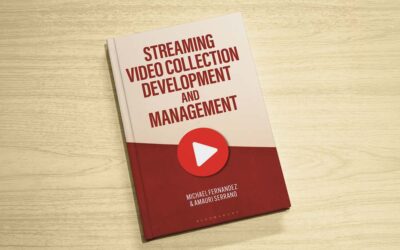Interview with the editors: Hickerson, Lippincott, and Crema on Designing Libraries
Lauren Hays
Tom Hickerson, Joan Lippincott, and Leonora Crema edited Designing Libraries for the 21st Century from ARCL Publications. My interview with them is below.
Lauren Hays: Would you please introduce yourself to our readers?
Tom Hickerson: I’m Tom Hickerson, former Vice Provost at the University of Calgary Library, and Emeritus Librarian at Cornell University. Now, I am a consultant affiliated with Quality Metrics, LLC. I am also the founding organizer of the Designing Libraries Conference Series.
Leonora Crema: I’m Leonora Crema and I’m an Administrative Librarian Emerita at the University of British Columbia.
Joan Lippincott: I’m Joan Lippincott, the Associate Executive Director Emerita at the Coalition for Network Information (CNI), which is a joint program of the Association of Research Libraries (ARL) and EDUCAUSE, and I’ve been on the planning committee for the Designing Libraries Conference since its inception.
Lauren: Why did the three of you decide to edit this book?
Leonora: The past 2 decades have been a transformative time in the history of college and research libraries. In this time we’ve seen a shift from buildings primarily designed to house collections, to buildings that are being designed for people and their knowledge creation. For about 10 years our Designing Libraries for the 21st Century Conference has tracked this shift and started to create a community of interest in this new generation of libraries. By creating this book based on the conference, we wanted to take this dialogue and expand it out to a wider audience.
Joan: And we wanted to share the perspectives and insights of the many speakers from the eight Designing Libraries Conferences, so they’d be available to a really wide audience. All of the authors of the 28 chapters of the book have spoken at one of the conferences, and it was tough to decide which to include, because there were more than 28 speakers in 8 years of the conference. We were very, very pleased with what the chapter authors produced. They didn’t just repeat their presentations. They extended them in much deeper ways, and really gave us a lot of their philosophy and their principles of planning, and brought them into the current era. They had all spoken prior to the outbreak of the pandemic, and many of them put in some kind of update of the current situation.
Lauren: This book is focused on designing libraries in a much more holistic fashion. Will you explain what that means?
Joan: That’s probably my favorite theme. Many people think about designing libraries solely as architectural or interior design processes. We see those aspects and understand their importance, but also believe that the potential of new and renovated spaces can be fully realized only if programs and personnel are part of the reimagining of the space. The planning process needs to include what librarians want their users to be able to do in the spaces, especially things with a strong connection to the institution’s academic program and sense of community. It’s more than selecting nice furniture, which tends to be what people directly go to when they’re planning new libraries. Brian Mathews, one of the chapter authors, summed it up best for me when he wrote that he had visited a newly renovated library and felt underwhelmed. I’m going to quote a part of his chapter. He said, “The reason I had that response was due to my expectations. It was described as a transformation. Yet, it seemed more like a refurbishment. The same service design and structures were in place. Yes, it looked stylish, but, conceptually speaking, it operated in the same manner as it did decades prior. My disappointment had nothing to do with aesthetics. Rather, my reaction was to the unrealized potential. This library had a chance to transform itself, to actualize a new guiding philosophy, and it missed that opportunity.”
That sums it up really well for me. I’ve been to a lot of renovated libraries that looked beautiful. But the library was doing nothing new in those spaces. They hadn’t utilized the full potential of the renovation.
Lauren: What are 3 things that you hope readers take away from this book?
Leonora: The conference and the book to some extent are showcases for these brand new next-generation library buildings. However, the book also features renovation of smaller spaces, whether that be just a room or the part of the floor where smaller changes have been used to great effect or where one focused idea or project has created great value for library users. So we hope that readers will see you don’t need a multi-million dollar budget to make a big impact. You can go big, yes. But you can also start small.
Joan: In most facilities projects, some members of the planning group, or some individuals who have very important roles in designing or implementing the project such as architects, facilities people from the university and people from other planning organizations, either inside or outside of the institution have had little or no experience with libraries. They’re experienced architects or facilities planners, but they’ve never in their careers dealt with a library project. They often have really old fashioned views of the library’s functionalities. Therefore, we encourage librarians involved in facilities projects to share appropriate chapters with the project-planning group. We hope that will provide an advanced understanding of what libraries are about today, and provide some examples of some creative thinking and some interesting projects to use as examples to people who just have not been exposed to that kind of thinking.
Tom: Picking up where Joan left off, these individuals are terribly important. Designing a transformative library requires an imaginative approach and a visionary sense of the possibilities. But realizing that vision requires consistent institutional leadership, commitment, and support. In my case at the University of Calgary, it was always a team approach.
Lauren: Are there specific people and specific stakeholders that you like to see involved in planning conversations?
Tom: For a major project at a university, you definitely need the support of the President or the Provost, and also the trustees. Prominent alumni and community leaders are important too. For public institutions, major changes in the facilities on the campus also need the support of city and state governments.
Joan: I would like to follow up a little bit on that. I think two of the chapters are particularly good at describing the reorientation of some of the people on the planning group of how they, in effect, had to market or sell their project to funders, particularly to state funders. It was not about changing the project, it was how to talk about it in ways that this broader audience would understand.
Leonora: For people who are either building new or renovating libraries, the actual construction or renovation is often the shortest part of the process. The longest part is often the advocacy that can build up over years through many fits and starts, and sometimes blind alleys. I would just advise people to look at where the levers of decision-making are for getting your project on the campus list, because you’re there vying with other departments and many other important priorities. So really be sure you understand the politics on campus to know who the decision makers are and what factors they’re working from.
Lauren: As you edited the book. Was there anything that surprised you?
Leonora: What surprised me was the capacity of libraries to fundamentally reinvent themselves. After decades, if not even centuries, of being one thing libraries have pivoted rather rapidly to become quite another. Whenever I tell people that I work in a library, they often say that “libraries are really changing these days, aren’t they?” And they’re absolutely right. For organizations that people still count on (in traditional ways) for cultural memory or as keepers of the printed record, the capacity for change and reinvention has really been quite remarkable.
Joan: The wealth of knowledge in our community surprised me with its range and its depth. The authors really were generous in sharing that knowledge.
Tom: Several of the chapters, in reflecting on our holistic approach, amplified my understanding of the many factors, some of which have been discussed by Leonora and Joan,including institutional and political partnerships and fundraising efforts.Also particularly important, is creating a library and institutional profile that’s appropriate for your university.
Lauren: For anyone embarking on a new library design. Where do you recommend they start?
Leonora: By reading our book, of course! But seriously, as we said before, part of what we’re trying to do with the book is to create a community of interest or a knowledge base around what these next generation libraries are, and what are some of the core ideas and best practices and lessons learned that we want to share. We’d advise everybody contemplating a new space to learn and to get out and see what the possibilities are. It will help you when you come home to be able to reimagine the opportunities of your space and have those discussions on your campus.
Joan: I would encourage planning groups to start with some assessment, particularly 2 areas that I think have sometimes been under appreciated. Often an assessment starts with looking at students who in academic libraries are generally the largest user group, and what they’re doing and what they like and what they don’t like. But the areas of assessment that I feel are at least as important, if not more important, are doing an environmental scan of what other campus units are doing both to avoid duplication or to find potential partnerships, and of course to look for things that are gaps in what’s being offered on the campus that the library could fulfill. And then, secondly, some assessment of curricular and research directions. So again, the assessment is often of students working individually or in small groups in the library. It’s not about what directions faculty want to take the curriculum. For example, would they like their students to be able to do podcasting projects or do data visualization? What about in research areas? Are they getting into AI? And are there programs and the facilities that would support these directions that might be included in the library plan if they understood those needs.
Tom: Once we focused specifically on building great libraries, and we still want to do that. But today we need to look at the library we’re designing and the degree to which it is an institutional asset serving the larger society and the library’s relationship with its various communities.So we need to design and build and realize libraries that are truly an asset to the institution as a whole.
We often think of public libraries as being particularly interested in how they align with the public need. But the demand for universities today is that they serve a large societal role. So how can the library be a central contributor to realizing that societal role?
Lauren: How do you think library design will change over the next 50 years?
Tom:Oh, my! There will be remarkable changes in libraries and their programmatic roles over the next 50 years. But those changes will be evolving even before the opening of your new library. Thus, capacity for change must be incorporated into the basic design and structural engineering of your library from day one or even before day one. This involves permeability which is the opposite of permanence. Major features like raised flooring throughout, and non-load bearing walls are important contributors to this endeavor. As an example, within the decade following the opening of the Taylor Family Digital Library at the University of Calgary, important spatial and programmatic changes have been made. These include the creation of LabNEXT, a hub for a constellation of research services; a graduate research commons; the move into the library of the Research Data Centre, a national network of proprietary federal data; the creation of a one-button studio; and the move to the second floor of the special collections units which were previously on the fifth floor.
These changes were driven by major research; by new ideas employed at other institutions, some of which were learned about at Designing Libraries Conferences; new institutional partnerships, which will always be expanding; and a substantial increase in the scope of special collections and the desire to increase their visibility..
All of these changes are reflective of the mantra that I developed for the Conference Series and for our book: “Design for the library you know, design for the library you can imagine, and design for the library you cannot yet imagine.”
In the next 50 years we will see many changes that we have not yet imagined.
Joan: I will mention three things. First, more attention to genuine integration of universal design, making that more forward, not just complying with universal design in legal terms, but really thinking through what would make many library users more comfortable, so that they don’t feel separate or apart, or that they they have to be treated specially in a way that is more like singling out rather than being welcomed.
The second is more attention to outdoor spaces. This is in part a result of the pandemic, and people realizing that when they can, they might prefer to congregate outdoors. Libraries are already paying more attention to this. Sometimes it’s space on the rooftop, sometimes it’s space in a courtyard, and this isn’t new. I just think there will be more of it.
Then the third thing is that we’re in the middle, or at the beginning of a mental health crisis among students on many campuses. Many students were negatively impacted by the isolation they felt during the pandemic. As they return to campus, there can be a renewed sense of belonging to institutions, and I feel that libraries can have a major role in providing places where students feel they belong. I think that’s been the case on many campuses for many years although not on all campuses. I do think libraries can be more intentional in developing spaces where students feel they belong.
Lauren: Is there anything else that you would like to share?
Joan: I wanted to add one other comment, which is to make sure that the readers of your Blog know that an open access edition of this book is available through our publisher, ACRL.
Lauren Hays
Lauren Hays, PhD, is an Assistant Professor of Instructional Technology at the University of Central Missouri, and a frequent presenter and interviewer on topics related to libraries and librarianship, especially information literacy, educational technology, and library and information science education. Please read Lauren’s other posts relevant to special librarians. And take a look at Lucidea’s powerful integrated library systems, SydneyEnterprise, and GeniePlus, used daily by innovative special librarians in libraries of all types, sizes and budgets.
Never miss another post. Subscribe today!
Similar Posts
Growing Your Leadership Skills: 7 Tips for Special Librarians
Great library leaders aren’t born—they’re made through learning self-reflection and practice. Here are seven strategies to help you grow and lead with impact.
Keeping Up with Copyright and Generative AI: What Special Librarians Need to Know
As generative AI becomes more prevalent copyright law is evolving to address its impact. A new report from the U.S. Copyright Office provides guidance on what is (and isn’t) copyrightable.
Understanding Shadow AI: Risks Costs and Governance
AI can enhance search discovery and efficiency but unsanctioned adoption—known as “shadow AI”—can lead to budget overruns and compliance risks. Here’s how to evaluate AI pricing models and build a governance strategy that balances innovation with cost control.
Interview with an Author: Fernandez on Streaming Video Collection Development
As demand for streaming video in libraries grows so do the challenges of managing access budgets and licensing. Co-author Michael Fernandez shares key insights from his book “Streaming Video Collection Development and Management”.






Leave a Comment
Comments are reviewed and must adhere to our comments policy.
0 Comments